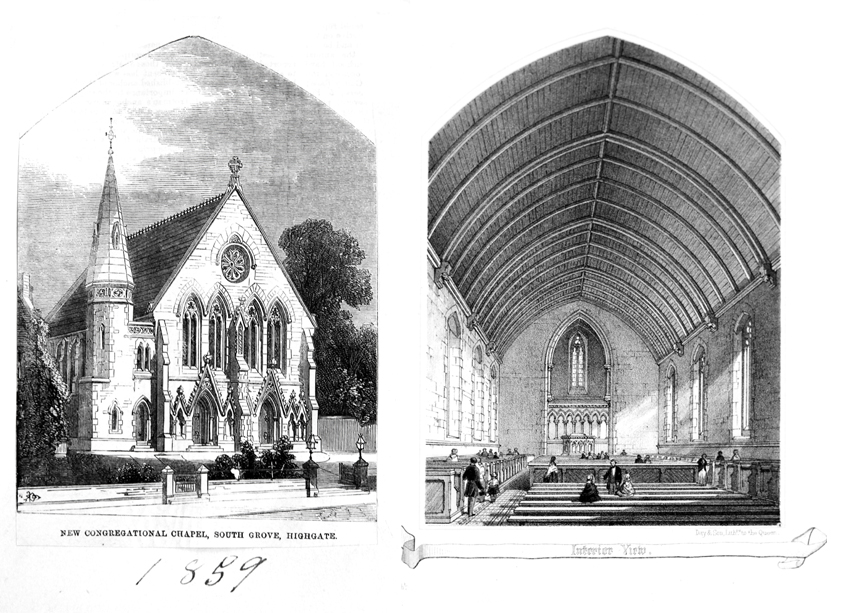A non conformist history
Pond Square Chapel dates from 1859 and is built on the roots of a nonconformist tradition in Highgate, stretching back to the mid-1660s. The Five Mile Act of 1665 decreed that any Minister ejected from the Church of England for their dissenting views, could not live within five miles from any town or parish where they had been a minister.
Luckily, the rural village of Highgate was just over five miles from the City of London. The population grew rapidly in the nineteenth century, as people moved away from the City smoke and sought refuge in this village nestled in woods on a hill.

From Congregational chapel to United Reformed church
The building was constructed originally as a Congregational chapel. The new United Reformed Church denomination was formed in 1972 by the amalgamation of the Congregationalists and English Presbyterians.
Pond Square Chapel actually stole a march on the URC by combining the two local groups in the 1960s.
Architectural details
Along with the War Memorial in the front garden, the chapel is Grade II Listed. The main frontage is in Bath stone with brickwork sides and the rear shows stone detailing. The architect was Thomas Roger Smith and Pond Square was his very first commission.
The lovely chapel you see today has an interior that was largely remodelled and refurbished in 1986 with the express intention of opening it up to wider community use, which still carries on today. We are constantly looking to the future, with environmentally-friendly building improvements and better accessibility.
Read more about Pond Square Chapel’s history in church member John Thompson’s book Highgate Dissenters – available from the Church.